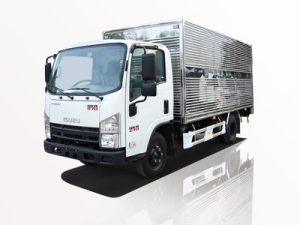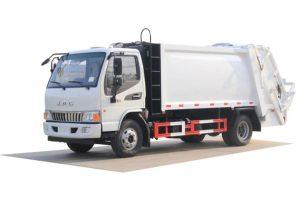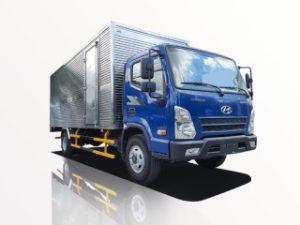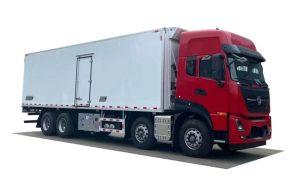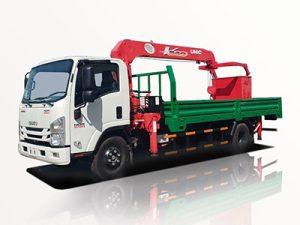Monday to Saturday - 8:00 -17:30
How Much Water Does a Tanker Truck Hold? Understanding Water Transport Capacity
When it comes to transporting water, tanker trucks play a crucial role in ensuring safe delivery to various locations. The capacity of these trucks can vary significantly based on their design and purpose. In this article, we will explore how much water a typical tanker truck can hold, various types of tanker trucks, factors affecting their capacity, and practical examples of water transportation.
Understanding Tanker Trucks
What is a Tanker Truck?
A tanker truck is a specialized vehicle designed to carry liquids. These trucks are used for a wide range of purposes, including transporting water, fuel, chemicals, and other liquids. The design and construction of these trucks allow for optimum safety and efficiency while transporting valuable liquids.
Types of Tanker Trucks
There are various types of tanker trucks, each designed for different purposes. Here are some common types:
- Water Tanker Trucks: Used primarily for transporting potable water or water for firefighting.
- Fuel Tanker Trucks: Designed to hold gasoline or diesel, featuring specialized compartments to prevent spillage.
- Chemical Tanker Trucks: Built to transport hazardous materials, often with special lining and safety features.
How Much Water Does a Tanker Truck Hold?
Average Capacity of Water Tanker Trucks
The capacity of water tanker trucks typically ranges from 1,000 gallons to 11,600 gallons. The most common capacities are:
| Tanker Size | Capacity (Gallons) | Capacity (Liters) |
|---|---|---|
| Small Water Tanker | 1,000 – 2,000 | 3,785 – 7,570 |
| Medium Water Tanker | 3,000 – 4,000 | 11,355 – 15,141 |
| Large Water Tanker | 5,000 – 11,600 | 18,927 – 43,965 |
Factors Affecting Tanker Truck Capacity
The capacity of a tanker truck can be influenced by several factors:
1. Truck Design
The design of the tanker, including its length and width, can greatly affect its total capacity. Longer tanks typically hold more water.
2. Weight Regulations
In various jurisdictions, there are regulations on how much weight a truck can carry. This affects the volume of water being transported, as trucks must remain within weight limits.
3. Material Used
The materials used to construct the tanker can also play a role in capacity. For instance, stainless steel tanks may have different internal dimensions compared to aluminum tanks.
4. Intended Use
If a tanker truck is designed for multiple uses, it may have compartments to separate different types of liquids, which can impact overall capacity.
Practical Examples of Water Transport
1. Construction Sites
In construction, water tanker trucks are frequently used to supply water for dust control, mixing concrete, and providing hydration for workers. A medium-sized water tanker holding around 3,000 gallons is typically sufficient for these purposes.
2. Agricultural Use
Farmers often use water tanker trucks to irrigate fields. A large tanker truck can transport up to 10,000 gallons of water, ensuring sufficient supply for extensive agricultural land.
3. Emergency Services
Fire departments may utilize water tanker trucks to quickly transport water to the scene of a fire. These trucks can hold anywhere from 3,000 to 11,600 gallons, providing ample supply for firefighting efforts.
Cost and Operation of Tanker Trucks
Operational Costs
The costs associated with operating a water tanker truck can vary based on several factors:
- Fuel Costs: Tanker trucks consume fuel based on distance traveled and load carried.
- Maintenance Costs: Tankers require regular maintenance, which can lead to significant expenses.
- Labor Costs: Employing drivers and crew adds to operational expenses.
Budgeting for Water Transport
When budgeting for water transport using tanker trucks, consider the following:
- Distance and terrain
- Type of water needed (potable vs. non-potable)
- Frequency of deliveries
Environmental Impact of Water Tanker Trucks
Reducing Carbon Footprint
Water tanker trucks can contribute to environmental concerns due to carbon emissions. To minimize their impact, consider the following strategies:
- Optimize routing to reduce fuel consumption.
- Regular maintenance to ensure fuel-efficient operation.
- Switch to greener alternatives where possible.
Regulations Governing Water Transport
Local and Federal Regulations
Compliance with regulations is critical while operating a water tanker truck. Different regions may have distinct laws governing the transportation of water:
- Licensing and permits
- Safety regulations for driver and public protection
- Health regulations for potable water transport
Best Practices for Compliance
To ensure compliance with regulations, tanker truck operators should:
- Stay informed about local, state, and federal laws.
- Conduct regular safety checks and training.
- Use appropriate signage and marking on the tanker trucks.
Tips for Choosing a Water Tanker Truck
Evaluating Your Needs
When selecting a water tanker truck, consider the following factors:
- Volume Required: Determine how much water you need to transport regularly.
- Type of Water: Assess whether you need potable or non-potable water.
- Distance: Consider the distance to be covered and if the tanker’s capacity aligns with your needs.
Purchasing vs. Leasing
Deciding whether to purchase or lease a water tanker truck depends on usage frequency and budget:
- Purchasing: Best for long-term needs and frequent use.
- Leasing: Ideal for short-term requirements or trialing different models.
Frequently Asked Questions (FAQs)
1. How can I calculate the volume of a tanker truck?
To calculate the volume, you can use the formula: Volume = Length × Width × Height. You may need to convert the units to gallons or liters as appropriate.
2. Are all tanker trucks suitable for drinking water?
No, only tanker trucks specifically designed for potable water can safely transport drinking water due to safety standards and materials used.
3. How often do water tanker trucks need maintenance?
Water tanker trucks should undergo regular maintenance checks every few months, depending on usage and manufacturer recommendations.
4. Can I use a regular truck to transport water?
While it is possible, it is not recommended as regular trucks may not be equipped with the necessary tanks and safety features for liquid transport.
5. What is the most common capacity for water tanker trucks?
The most common capacity for water tanker trucks ranges between 3,000 to 5,000 gallons.
6. How do tanker trucks cope with different terrains?
Tanker trucks may be designed with features such as reinforced suspensions and all-terrain tires to handle various terrains effectively.


